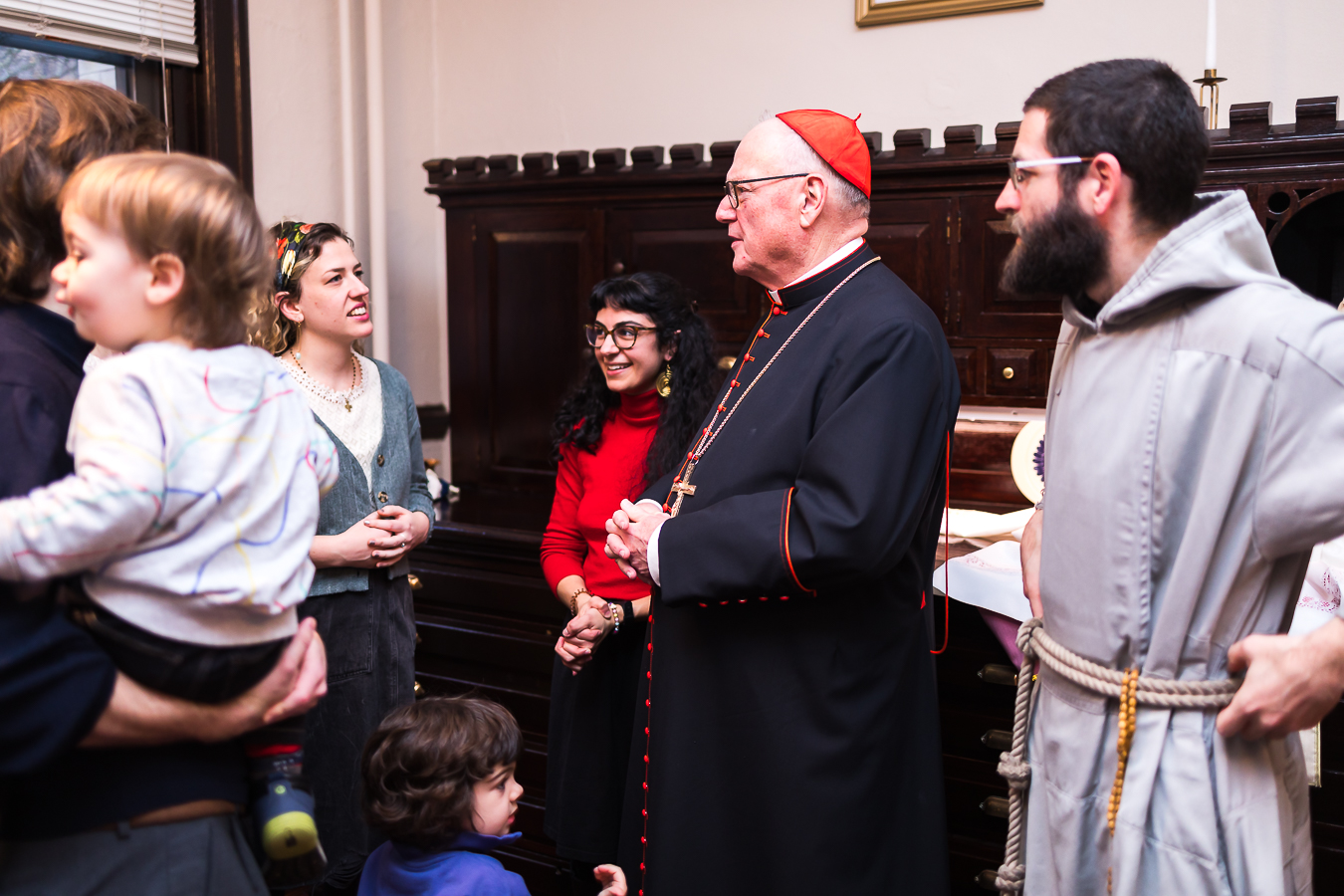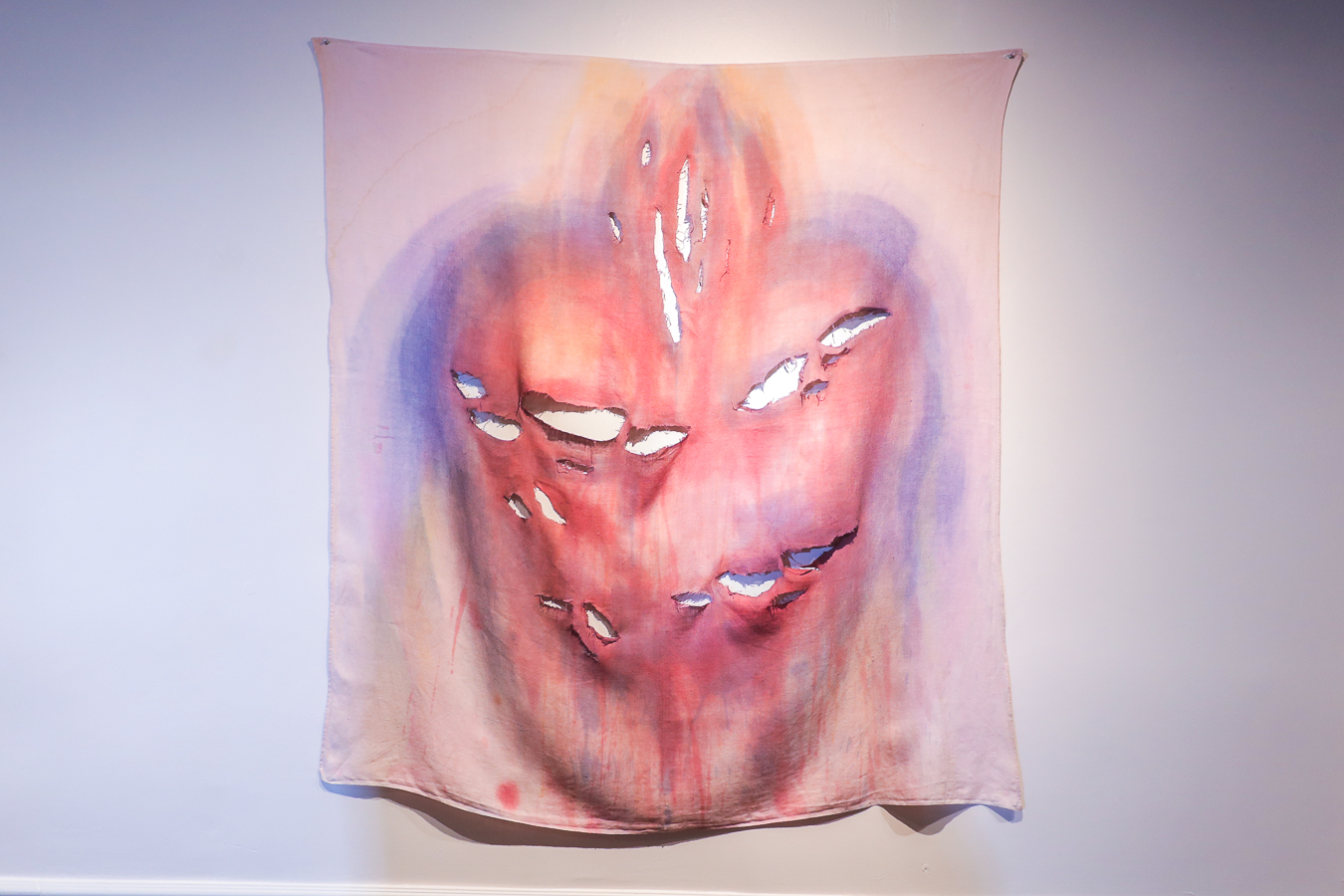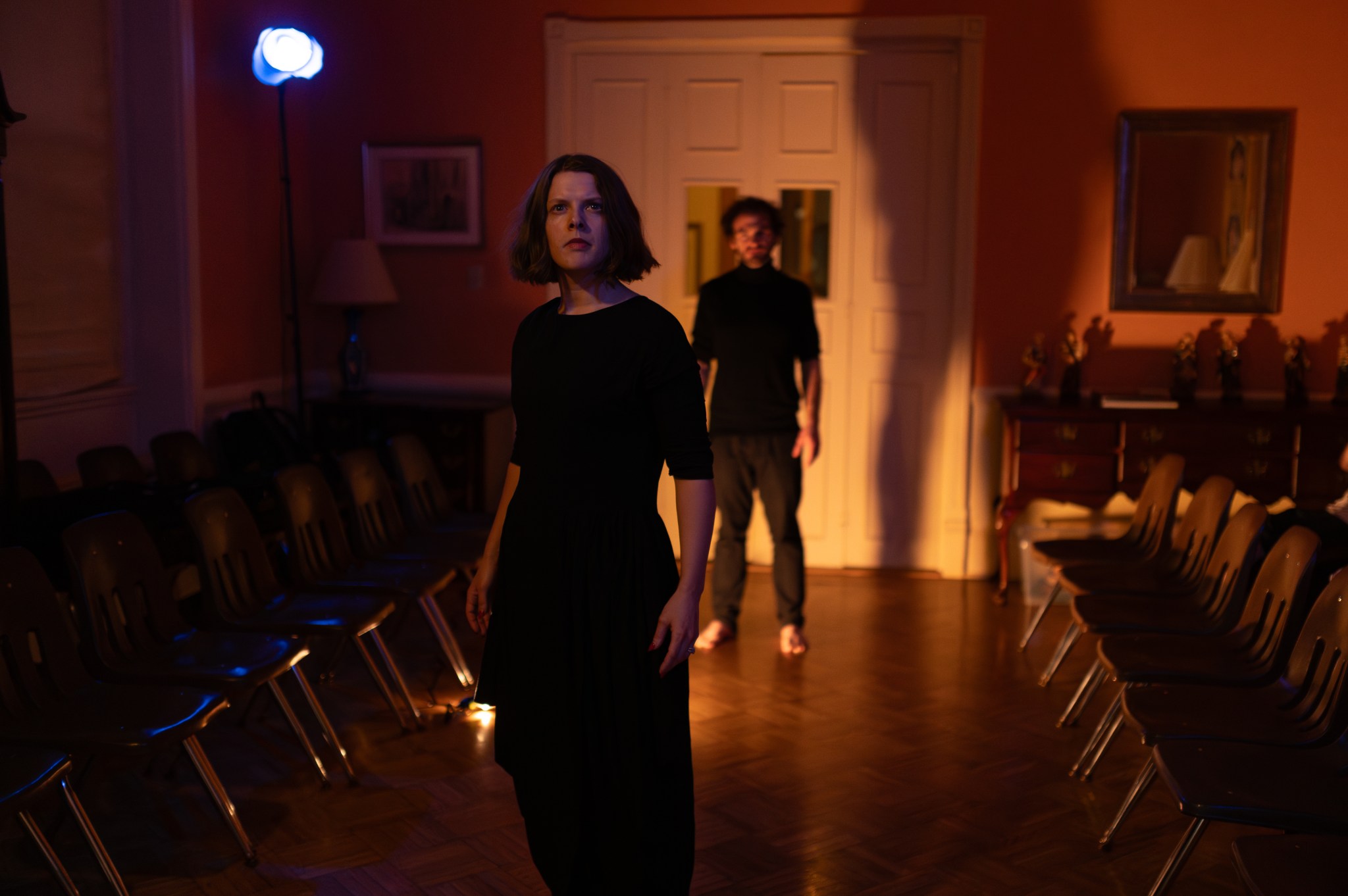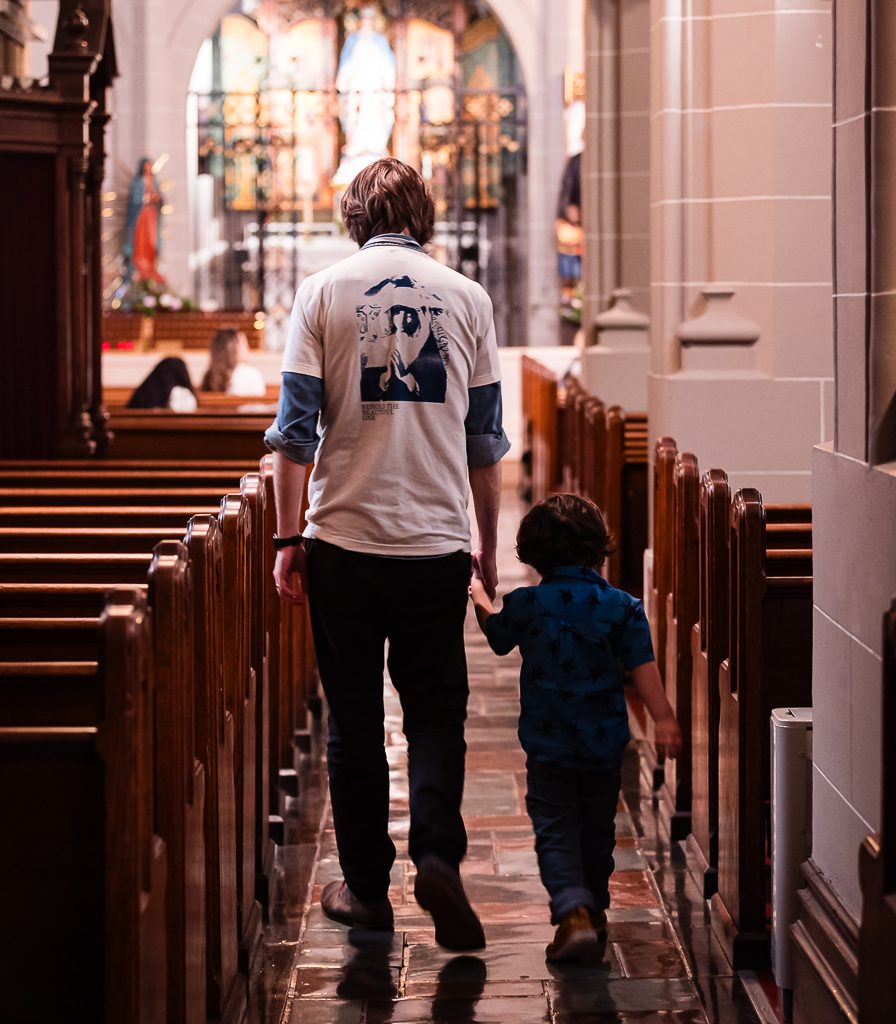A particular piece of art was emblematic of my college artistic education: a massive rectangle, painted in the style of a Persian carpet, on a tiger, peacock, and doe. The focal point: two dark-skinned nude women. It’s an interesting painting, with beautiful colors. But I’m not sure what it means.
The artist has described the work using phrases like “vulnerabilities of queer and racialized bodies,” and “minoritarian knowledge productions and epistemologies,” and “radical potential for selfhood and pleasures of enfleshment that exceed the constraints of sovereignty, subjectivity, and legibility in the context of white, patriarchal, and hegemonic structures of domination.”
For all of that, though, I still don’t understand the work. Or, I suppose I sort of understood—and then I shrugged, noted its pretty colors again, and moved on.
The effect—or lack thereof—of this work is emblematic of much of my experience of contemporary art, art that, while it may (sometimes) be beautiful elicits little more than a hazy puzzlement, a feeling that I have educated myself without being able to say for sure that I have changed. When I came to New York in 2022 and began to loiter around the city’s art scene, I expected that same sort of fuzzy confusion. And I did find that: I went to gallery openings and poetry readings and was pleasantly puzzled, considering it the natural emotion of a newly minted Artistic Person.
But then I found sharpness, and in an unlikely source: Arthouse 2B, a New York City-based artist collective whose dominant inspirational ethos is Catholicism.
I anticipate a scoff: Catholic art, even when it’s pretty, is old and stale, you might say, or else it’s the stuff of Home Goods posters reading “Faith Over Fear.” Or the stuff of disdained politics with archaic views of women and sex. Indeed, you might ask, how could Catholic art be radical anyway, when so much of the world stewed for so long in church-forced morality and only now is beginning to taste freedom?
But there’s something refreshing about Arthouse 2B, named thusly because of the apartment on Manhattan’s West Side that the group initially grew out of during the COVID pandemic. Co-founded by visual artist Erin K. McAtee and dancer Claire Kretzschmar, the collective aims, through gathering artists and hosting performances and exhibitions, to “restore culture through restoring the heart of the artist.” Its three values, according to the collective’s website, are cultivating artistic integrity, deepening spirituality, and nourishing hospitality. To that end, Arthouse 2B offers a wide variety of programming, from exhibitions and plays—usually held in the basements of churches scattered across the city—and masses for artists to retreats and talks.
To get a better sense of what this all means, I spoke to McAtee and Arthouse 2B’s media manager Karina Majewski on a crisp morning in November, at a playground in Central Park near East 100th Street. According to McAtee, the idea for Arthouse 2B grew partly out of what she saw as a need for Catholic artists—often those just starting out—to form a community to share and showcase art motivated by their faith. What New York doesn’t need more of, McAtee said, are “sterile-feeling, white-cube gallery spaces,” that are exclusive and upscale.
“Those are great and have their place,” McAtee said, “but there’s something else that happens when we’re working with more of a grassroots kind of alternative space with artists who are kind of willing to get their hands dirty and who aren’t intimidated by sort of placing themselves in an environment where it’s harder to relate with anyone who would come through the door of that gallery, or where it would feel inaccessible. Or like, ‘oh, I have to be part of this echelon of society to be able to understand this art, or to meet the artist, or to afford the art.’”
Majewski, whose primary art form is theater, said much of the acting world seems to focus only on political theater—performances seeking mostly to make a point about what the audience ought to believe about certain issues.
“Not that that stuff can’t be important or, you know, moving or transformative,” Majewski said, “but it does feel very limiting in the kind of work that you see popping up in regional theaters.” But at Arthouse, “artists can be free to explore more philosophical questions or even explore work that just might be a little bit too strange or a little bit too questioning for a typical regional theater where the audience are kind of conditioned to expect a certain message, a certain viewpoint, and also not be challenged too much on those viewpoints.”
McAtee noted that it’s possible to see overtly Catholic art as seeking the same political ends, only with a different viewpoint. But she differentiated between overly didactic art—what she termed as sometimes “saccharine” or “on-the-nose”—and more subtle art that’s deep and “shows me something very different and interesting about this person’s heart and their experience.”
“Just their experience of being an artist that’s actively listening, and becoming like an open, empty, pure vessel to just really transmit what God is speaking to them through their art,” McAtee said.

The time seems ripe for the Arthouse philosophy. Late last year, art critic Dean Kissick, in a cover story for Harper’s, meticulously disdained much of the contemporary art scene as vapid, ideological, and caring more about educating and pontificating than actually eliciting any emotion or imparting any knowledge not already found in a textbook.
“I don’t particularly care to have my awareness raised; I’d rather view art that tears open my consciousness, that opens portals into the mysterious,” writes Kissick. “I like art the most when it doesn’t mean a thing, or otherwise when its beauty or strangeness transcends its subject. Stop making so much sense. Art should do more than communicate: it should move us; it should make us weep; it should bring us to our knees. It is, along with music, the purest expression of the human spirit.”
Kissick’s sentiments were shared in January by William Deresiewicz, an art critic who wrote in Persuasion that art—and especially art criticism—had lost its way. In the decades after World War II, Deresiewicz wrote, “there was a lot of bullshit there—a lot of status-mongering, a lot of pretension, a lot of middlebrow ‘art appreciation.’ But there was also a lot that was real: a real desire for expanded consciousness, for spiritual depth, for a world made new by art, especially among the young and especially in New York.” And, he added, “that is what I don’t see anymore.”
For the critics of old, Deresiewicz wrote, “their writing was grounded in a direct encounter with the work. They weren’t distracted by moralistic agendas, topical talking points, or biographical chitchat.”
In a way, Arthouse 2B seems to synthesize both of what Kissick and Deresiewicz desire. They hadn’t yet published their critiques when I met with McAtee and Majewski in Central Park, but the pair seemed to anticipate both. Pope Benedict XVI, McAtee said, described beauty as “an arrow that wounds the heart,” and it’s through the wound that truth seeps through.
“There’s something deeper going on behind this that is totally beyond me, and that points me to something deeper about myself or about other people or about God,” McAtee told me.
Much of the work presented by Arthouse 2B is raw, even wounding. When I visited McAtee’s studio in Lower Manhattan last August, the first word that came to me was “embryonic”—McAtee’s work, consisting partially of dyed fabrics stretched across walls, is supremely layered, invoking a depth of little shapes seemingly hidden behind layers of flesh. The same goes for the collection of ‘zines published at irregular intervals by the collective. One, a square, white pamphlet, consists of an essay by a nun, interspersed with watercolor images that appear to zoom in and out of the human body: a cross-section of musculature; a close-up of an entirely pink breast; a purple beanlike structure that may or may not be a zygote.
The artwork does not masquerade as a doctoral thesis; at the very least, there are no long plaques attached to these works trying to convince me of their depth. It is also not overly moralistic; no one is making stylized, Instagrammable decalogues, and you probably wouldn’t put any of it on a poster at a pro-life rally. Instead, the work possesses a spiritual depth, such that you might even be able to sit in front of a work for hours and still not be done with it.
It helps to be aware of Arthouse’s focus on Catholicism: You know to expect some sort of spiritual aspect. But besides that, there is no noise between you and the art. And that’s when art can start to wound you.

Do we need art that is wounding? For some, it might be easier to be wounded by Arthouse 2B’s theater work. Consider its October play, a punk rock-themed show about a girl who, determined to devote her life to God only, forcibly eliminates herself from the marriage market by gouging out her eyes. The result is bloody; casual viewers were likely nauseated, and knowledgeable viewers were likely both nauseated and aware that the girl in question was St. Lucy, a third-century martyr.
Or maybe consider its adaptation last June of The Jeweler’s Shop, a 1960 play about marriage by Polish playwright Karol Wojtyła, who later became Pope John Paul II. This one was more intimate than the St. Lucy work; crammed into 40 chairs in a space about the size of the average living room, the rest of the crowd and I watched as Majewski and other black-clad actors ran, jumped, and wavered, all inches from our faces. For much of it, I didn’t know where to look. But I vividly remember it 10 months later.

During this last performance, I guessed something about Majewski that was confirmed later when I saw her at the St. Lucy show: She was pregnant with her third child. When we spoke in Central Park in November, she showed up with two boys in tow, with another, the 2-week-old Beckett, strapped to her chest. The older kids wove in and out of our conversation; the oldest one offered us acorns and at one point got sand from the sandbox in his eye.
I asked: How has becoming a mother affected your art?
According to Majewski, motherhood—which, in the early days, ends up being a lot of mundane tasks, strung together repetitively—opens you up to the little things you have to do to create something “a lot greater and significant.”
“You’re nurturing life,” she said. “And it’s the same thing with being an artist.”
True to Arthouse 2B’s devotion to hospitality, children have been present at almost every performance and exhibition I have attended. Children have long been an integral part of Christian life; Jesus was, after all, a child once, and you might wonder whether he ever offered his mother acorns or got sand in his own eye. The adult Jesus, in the Gospel of Matthew, also notes the importance and even supremacy of children: “Truly, I say to you, unless you turn and become like children, you will never enter the kingdom of heaven.”
Wonder is often described as childlike. But I do think that, at least in art, rawness, simplicity, and especially earnestness—particularly as a foil to the cynicism pervading the culture today—might be the more important qualities. It’s been many a parent’s observation that children have no filter, and while that might lead to some awkwardness in public, the shamelessness of a child who has only questions and no pretension can refresh in a time where everyone has a curated profile.

What I saw at Arthouse 2B seems to have that earnestness especially, that presentation of the work on its own terms—not as an instrument of reverse domination or political revenge but as an instrument of beauty meant to be shared. I can’t say for certain whether this quality is present in every piece of Arthouse 2B’s work. But earnestness surely pervades the depth of the whole project, as surely as I teared up at the last line of A Jeweler’s Shop, when a man talks sadly, pleadingly, to his wife:
“What a pity that for so many years we haven’t felt like two children … Anna, Anna, how much we have lost because of that!”

















